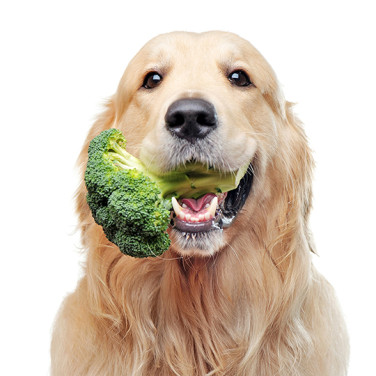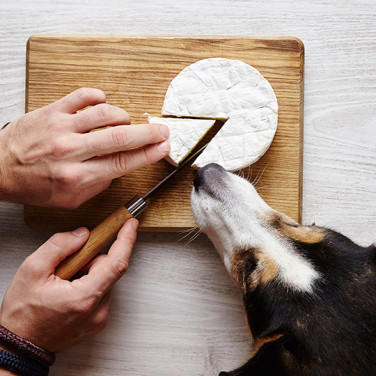DISEASES
Causes and Symptoms of Intestinal Obstruction in Dogs - What To Do?
페이지 정보
본문


What is intestinal obstruction in dogs?
Intestinal obstruction is a common condition that occurs when the stomach or intestines are either partially or completely blocked, leading to the prevention of solids or liquids from passing through. Typically, this issue is found in young curious puppies who have not yet been trained to not put foreign substances in their mouth, or learned to chew and swallow properly. Depending on the type of foreign substance swallowed, toxic substances may be absorbed into the intestine, and linear foreign bodies such as strings and ropes may twist the intestine.
In most cases, intestinal obstruction is caused by a foreign object; however, in some elderly dogs, it can also be caused by a mass or tumor, and other chronic issues such as intra-abdominal adhesions and inflammation from surgery. A variety of reasons can cause intestinal obstruction, including stricture and hernias.
The obstruction of the intestines blocks the movement of food and impairs the absorption of water and nutrients. In severe cases, it can cause tissue necrosis or intestinal perforation. If you suspect your dog has an intestinal obstruction, it is vital to seek immediate treatment from a veterinarian. If this condition is left untreated, symptoms can worsen significantly and lead to more invasive treatments.
Common causes of intestinal obstruction in dogs
Dogs are well known to ingest various foreign bodies such as stones, toys, coins, bones, clothing, seeds, etc. Intestinal obstruction primarily results from the presence of these foreign objects in the digestive system. This can typically cause symptoms of poisoning, perforation, or twisting of the intestine, depending on the shape and hardness of the foreign substance. Of these foreign bodies, linear objects such as cloth and string pose the most significant risk as they can cause the intestine to twist, leading to severe complications.
Although not as common as ingestion of a foreign body, intestinal obstruction can be caused by other means, such as:
-
Intussusception
Intussusception is a phenomenon in which the intestines overlap each other which can cause obstruction.
-
Intestinal torsion
The intestine may sometimes suddenly twist on itself causing obstruction.
-
Adhesion in the abdominal cavity
Adhesions caused by inflammation in the abdominal cavity from peritonitis or surgery can cause obstruction.
-
Stenosis
Stenosis is usually caused by wounds caused by chronic inflammation of the stomach or intestines, which can lead to intestinal obstruction.
-
Hernia
-
Mass or tumor (senior dogs)
Symptoms of intestinal obstruction in dogs
Intestinal obstruction can result in a range of gastrointestinal symptoms, including vomiting and diarrhea. When coupled with complications like intussusception, perforation, or torsion, it may also cause severe abdominal pain. Intestinal obstruction can eventually lead to the failure to absorb water and nutrients properly and can lead to additional symptoms, such as weight loss, loss of energy, and loss of appetite.
Symptoms that can result from an intestinal obstruction include:
- Repeated vomiting
- Diarrhea and difficulty defecating
- Abdominal pain: Various symptoms such as aggression due to pain, whimpering, crouching posture, etc. can be observed.
- Restlessness
- Loss of appetite
- Lethargy
- Weight loss
- Nausea
- Bloating
- Dehydration
When to see a vet for intestinal obstruction in dogs
Certain foreign bodies, particularly small ones, can pass through the digestive system naturally without causing much trouble. However, if a foreign body becomes lodged in the middle of the intestine, begins to cause damage to the gastrointestinal system, contains toxic substances that can be absorbed, or if the obstruction is caused by something other than a foreign body ingestion, it can result in a life-threatening situation for a dog.
Since intestinal obstruction can be difficult to diagnose based on symptoms alone, tests such as ultrasounds may be necessary to confirm it. If you suspect that your dog has ingested a foreign body or notice symptoms such as persistent vomiting, abdominal pain, or severe lethargy, it's essential to seek veterinary care as soon as possible.
Is there any home treatment for intestinal obstruction in dogs?
Intestinal obstruction is a serious condition that requires specialized treatment in a veterinary hospital setting. If you witnessed your puppy consuming something foreign, seeking medical attention right away is imperative (ideally within 30 minutes to 2 hours of ingestion), and inducing vomiting is advised to prevent the development of an intestinal blockage. However, if the foreign object has been present in the digestive system for a prolonged period or if it has begun to cause damage to the dog’s internal organs, it may be necessary to remove it through methods such as surgery or endoscopy. This is especially the case if the object is sharp or difficult to dislodge by other means. If intestinal obstruction is suspected, it is crucial to refrain from feeding your puppy until an accurate diagnosis has been made.
Diagnosing intestinal obstruction in dogs

To distinguish whether the intestinal blockage is due to an underlying condition or the ingestion of a foreign body. A veterinarian will identify the cause of obstruction through several tests and examinations.
-
Physical examination
A series of questions on the dog’s eating habits and tendency to chew or swallow foreign substances may be asked to determine foreign body ingestion. A veterinarian may also check for any abnormalities such as intussusception during a physical examination.
-
Blood test
If the dog appears to be in poor health, exhibiting symptoms such as vomiting, diarrhea, anorexia, and energy loss. A basic blood test such as a CBC, electrolyte, or serum biochemical test may be performed to assess dehydration, electrolyte imbalances, inflammation, and potential poisoning from foreign body ingestion.
-
Imaging tests
X-rays may be performed to locate a foreign body or to check for a mass in the intestine, intussusception, or signs of torsion.
If the foreign body is not properly identified in the X-rays or if it is difficult to clearly identify an intestinal mass, intussusception, or torsion. An ultrasound may be performed to identify the presence of a foreign body as well.
-
Endoscopy
After applying anesthesia, an endoscopy can be performed to remove a foreign body that remains in the stomach. During the procedure, the degree of damage to the esophageal and stomach walls can also be checked.
Treatment and surgery for intestinal obstruction in dogs
If a veterinarian deems surgery is necessary for intestinal obstruction in a dog, it's advisable to proceed as quickly as possible to prevent symptoms from worsening and promote a faster recovery post-surgery. Typically, patients are hospitalized after surgery to manage pain or infection, regulate activity, monitor diet, and assess for dehydration or electrolyte imbalance.
Various treatment options are available depending on the underlying cause of the obstruction. If the obstruction is caused by a foreign body ingestion, the course of action may include induced vomiting, endoscopy, or surgical intervention, taking into account factors such as the type and location of the foreign body, its size and time of ingestion, and the patients over health condition. For instance, if a sharp object is swallowed, induced vomiting could cause further damage. If the foreign body has already moved into the small intestine, endoscopy may be impractical at this stage and require surgical intervention. The veterinarian will use their best judgment to determine the appropriate treatment for the type of obstruction the dog is experiencing.
Intestinal obstruction caused by factors other than foreign body ingestion usually requires surgical correction. Twisted or overlapping intestines may need to be untangled, and necrotic tissue may need to be removed. In cases where there is a mass, surgical removal of the mass and a biopsy may be necessary. Depending on the tumor's type, additional drug treatments, such as chemotherapy, may also be recommended.
Prognosis of treatment for intestinal obstruction in dogs
The prognosis for airway obstruction can vary significantly depending on the underlying cause. If the obstruction is due to a simple foreign object, removal of the object can result in a quick recovery as long as it hasn't been in the airway for a long period and the damage dealt was not severe. However, if the obstruction is caused by a tumor, treatment may need to be prolonged. It's crucial to conduct a thorough physical examination and blood test before surgery since a patient's recovery time may be prolonged if their overall health is poor.
How to prevent intestinal obstruction in dogs
To prevent intestinal obstruction in dogs, it is crucial to be aware of their surroundings and teach them not to eat anything that could be harmful. For young and curious puppies, it is important to keep objects that they could potentially swallow out of reach and to supervise them while they chew or play with their toys and bones. It is especially important to prevent any rummaging through or biting into garbage bags. Additionally, training a dog from puppyhood to avoid things they shouldn’t, using commands such as "leave it" and recall training can help immensely in avoiding these types of accidents.
Find out more about your dog’s symptoms and diseases on the Buddydoc app!

The Buddydoc library is filled with everything you’d want to know about each symptom and disease your pet may experience. If you would like to find out more about the causes, signs, treatments, preventions, and more for your dog’s disease. Try out the Buddydoc app and search for your pet’s symptoms or diseases in the Buddydoc library.













